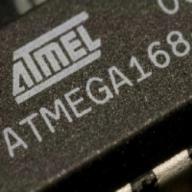1) The ease of substitution of alcohols by halogen:
3 alcohol > 2 alcohol >1 alcohol > CH3OH
2) Reactivity of SN1 reaction:
3 > 2 > 1 > CH3
3) Reactivity of SN2 reaction :
CH3 > 3 > 2 > 1
4) Substitution of alkanes (Bromination)
Bromination is highly selective:
3 carbons > 2 carbons > 1 carbons
Explain Reactivity of reaction
2013-10-19 10:12 am
回答 (1)
2013-10-20 7:53 am
✔ 最佳答案
Reaction type: Nucleophilic Substitution (SN1 or SN2)Summary:When treated with HBr or HCl alcohols typically undergo a nucleophilic substitution reaction to generate an alkyl halide and water.Alcohol relative reactivity order : 3o > 2o > 1o > methyl.Hydrogen halide reactivity order : HI > HBr > HCl > HF (paralleling acidity order).Reaction usually proceeds via an SN1 mechanism which proceeds via a carbocation intermediate, that can also undergo rearrangement.Methanol and primary alcohols will proceed via an SN2 mechanism since these have highly unfavorable carbocations.The reaction of alcohols with HCl in the presence of ZnCl2 (catalyst) forms the basis of the Lucas test for alcohols.The above is copy from http://www.mhhe.com/physsci/chemistry/carey/student/olc/ch15reactionalcoholshydrogen.html
Reason why 3o > 2o > 1o > methyl is due to the stabilization effect of the alkyl groups. Alkyl group is electron releasing group, it stabilize the carbocation of the SN1 reaction. the more alkyl group the more the stabilization effect. Therefore, 3o > 2o > 1o > methyl.
The easier the formation of carbocation intermediate, the easier for the reaction to take place. Question 1 and 2 actually are the same thing.
Answer to question 1 is :
Because substitution of alcohols by halogen mainly undergoes SN1.
Answer to question 2 is those thing above.
3. Reaction of SN2 involve bombardment of 2 molecules, say the alcohol and the nucleophile, If the alcohol is too bulky, the nucleophile is hard to come to the so close dsitance for the reaction to take place, this is callled steric hinderance or steric effect. So. the correct order is
CH₃ > 1⁰ > 2⁰ > 3⁰
2013-10-19 23:53:52 補充:
4. Bromination of alkanes is a free radical reaction. It is a chain reaction. It involves the alkyl free radical as intermediate. free radical intermediate is also an electron deficient species. It can be stabilize by the electron releasing alkyl group just like the carbocations. So the order is al
2013-10-19 23:55:21 補充:
回答內容超越了字數限制,Q4在意見。
收錄日期: 2021-04-27 20:37:29
原文連結 [永久失效]:
https://hk.answers.yahoo.com/question/index?qid=20131019000051KK00021

